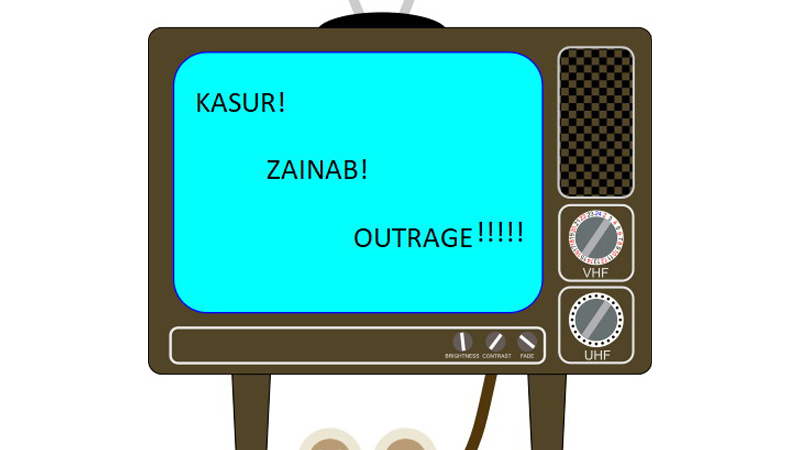
Sir: On January 4, 2018, a six-year-old girl in Kasur was kidnapped, raped and murdered. Cue the entrance of the media – print and electronic – to the scene. But while the incident itself could have been a watershed moment on child abuse, gender-based violence and legislation around child rights, the media took it upon themselves to rouse emotions and push the case towards its conclusion.
Perhaps this was an exercise in mismanaged morality.
Today, the highly publicised rape case has gone on the backburner for the media. There is little noise on the legislation front. And people, too, seem to have either forgotten or lost interest in the case. This is at odds with how the matter was kept in the public’s imagination for about three weeks. In fact, too much noise around the rape case seemed to drown out the issues at the heart of case: child protection, sensitisation and child rights legislation.
It is, therefore, worthwhile to revisit how the media reported on the case and how its actions seemed to trivialise, and in some cases, obfuscate the nature and gravity of the situation.
The media has a responsibility of shaping perceptions. It does so by what it is reporting, but more importantly, in the language of reporting. For the first three, four days of the incident, words such as ‘nanhi pari’ [little fairy], ‘masoom Zainab’ [innocent Zainab], ‘nanhi kali’ [little bud], ‘darinda sift’ [animal-like] made the rounds on news channels and in print media. The victim’s picture in a pink shirt and her dead body in the dump was a part of every news report in electronic media – some even argue that the case would not have gained as much traction had the girl’s pictures not been used. Then came the CCTV footage of the criminal. The footage was on loop for hours on news channels.
In this news cycle, did the media seek to inform and educate viewers and readers? Did it build a larger case around child sexual abuse?
Of the 992 news items monitored in the print media, almost 30 percent of the Kasur-related content was placed on the front pages. About 24 percent content appeared on opinion pages while 32 percent was published on inside and other pages. Only 12 percent of the total news items monitored were on the back pages.
Despite the widespread coverage, however, almost one-third of the news items on the Kasur case had elements of sensational content. Sensationalism in the media is all about hype – events and topics are twisted and turned to suit a certain editorial bias, and worse, manipulate the facts of a story. It plays with the audience’s emotions. This type of journalism – also called yellow journalism — employs the use of fear, anger, excitement and gloom in an attempt to increase viewership, ratings and, of course, profits.
Qurut-ul-Ain Iqbal
Via E-Mail
Published in Daily Times, May 19th 2018.